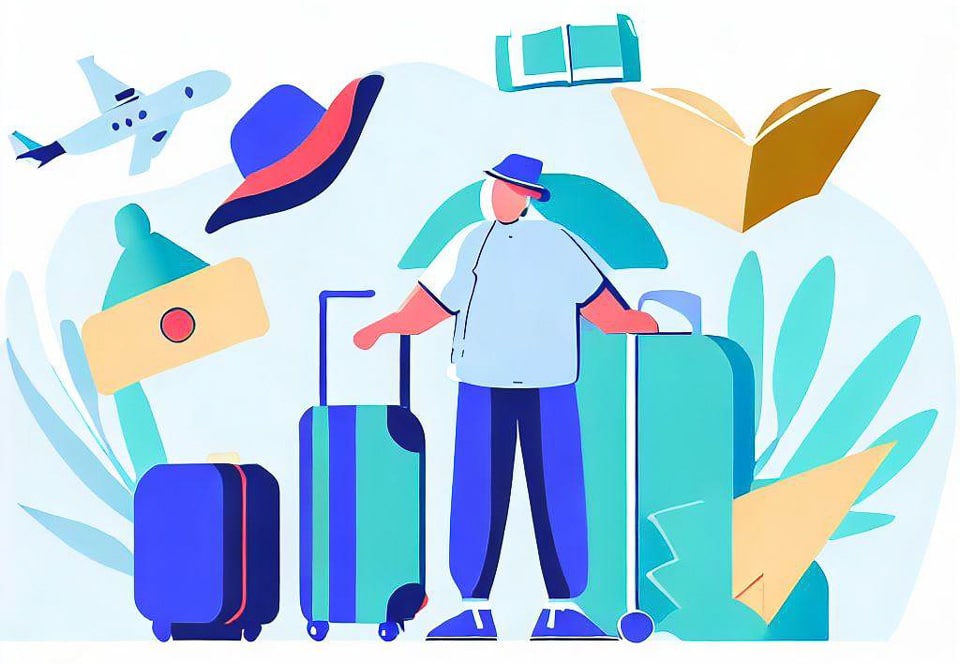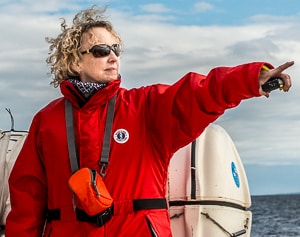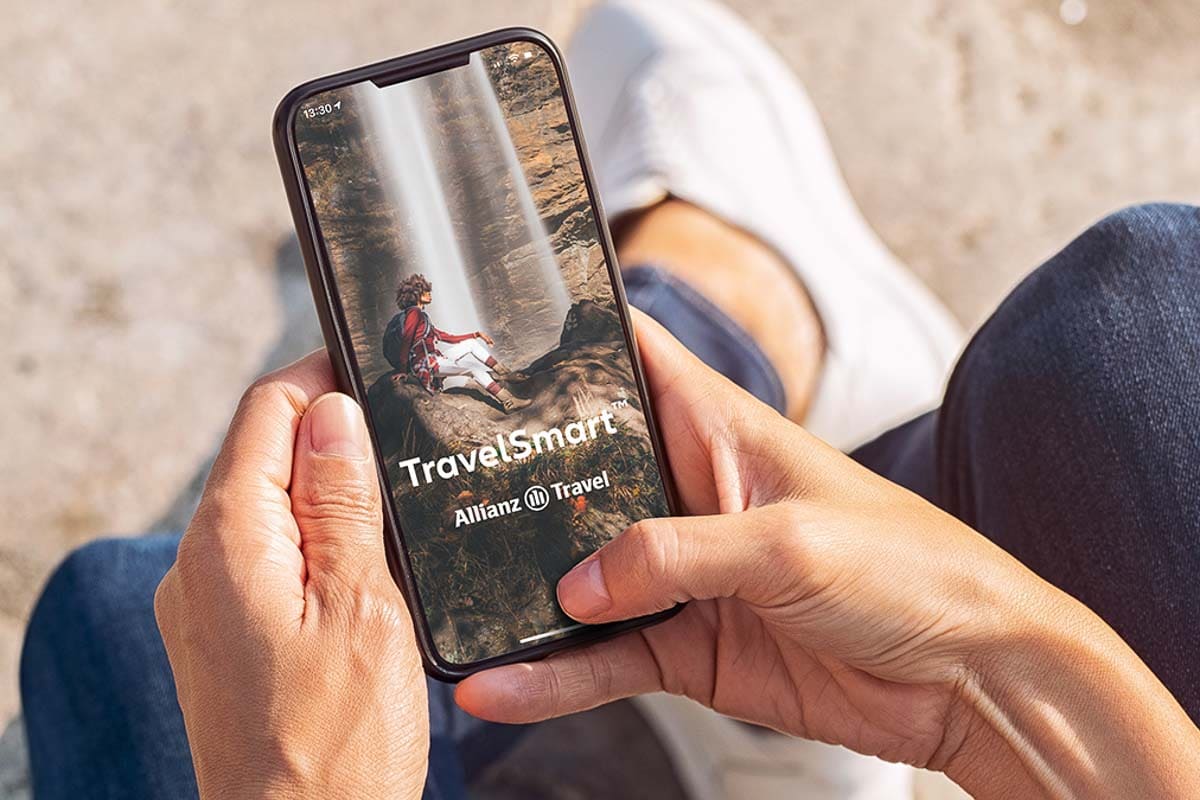
This is our collection of the best travel resources we use when we travel. Although no list of trip planning resources or tips can be complete, this online travel resources list is compiled solely of things we have personally used in our years of travel to get the best deals and make our next adventure easier, cheaper, safer, and more fun. Everything recommended on this page is something we actually use and can unabashedly recommend for your travel planning.
Table of Contents
Credit Cards and More
You may wonder why we put credit cards at the top of our travel resources list. The answer is: points and miles. Over the last 10 years, we've accumulated more than 1 million points and miles just through our credit card usage. That has translated to way more than $10,000 in savings on plane tickets and hotels over that time. Having the right credit cards is a great way to take advantage of these offers!
Get a travel rewards card: We have several credit cards, but all of them give us various travel rewards for airlines, lodging, and other travel necessities. (This one is our favorite over all travel benefits card, btw.) Examine each card's terms to see the features of cards that are right for you. Which airlines or hotels do you frequent are keys to picking the right card. And be sure to choose one (or more) that has no foreign exchange fees. Here is our detailed post on how to choose the right travel rewards credit card for you.
The Four Cards We Use the Most
The Chase Sapphire Preferred® Card is our go-to card for daily use. Honestly, it's the all around best travel credit card. It has a terrific points system in which you get a 25 percent bonus when booking air travel or hotels through their Chase Travel℠ portal. It has a $50 annual hotel credit when booking through their portal; you get 3x points on groceries, dining, and some streaming services. You also 5x points for travel purchased on their portal, and 2x on other travel. There are also lots of other benefits, including rental car insurance, lost luggage and trip interruption coverage, and no foreign transaction fees. It's well worth the $95 annual fee.
All information about Chase Sapphire Preferred card has been collected independently by Travel Past 50.
Learn more about the Chase Sapphire Preferred card
The Delta SkyMiles® Platinum American Express Card is the card we usually use when buying airplane tickets. We live in the Delta hub of Minneapolis/Saint Paul, so Delta almost always has the best flight schedules for us. And their partner airlines KLM and Air France make it easy to get around Europe, our most frequent destination. The Platinum Delta Amex card costs $350 per year, but the companion ticket you get every year more than makes up for that. This card also gives you 3x miles on Delta purchases, 3x miles on hotels, and 2x miles on dining. Also, you get a free checked bag and, maybe best of all, priority boarding. We love priority boarding.
Learn more about the Delta Amex Platinum card
The Capital One Venture X card has recently been added to “what's in our wallet.” It's got a hefty $395 annual fee, but that's almost entirely offset by its $300 annual hotel credit. Couple that credit with a Priority Pass lounge membership, reimbursement for Global Entry or TSA Pre membership, and more benefits, and that fee goes away quickly. It's a great complement to the Chase Sapphire Preferred because it provides those benefits the Chase card lacks.
Learn more about the Capital One Venture X card
Schwab checking account and debit card: Simply, this is the best debit card you can use for a couple of reasons. First, in most countries, the best way to get local currency is to withdraw it from a local ATM. (Don't exchange currency in an airport currency exchange. Especially don't use Travelex in the US. In both cases, exchange rates are terrible. They charge you 10 percent or more exchange fee.) Wait til you get where you're going and use an ATM at a bank. When you do that, you usually get the interbank exchange rate, i.e. no mark up. And second, although there is usually an ATM fee, Schwab will credit your checking account the amount of the fee.
Be sure to read our post on How to Get the Best Currency Exchange Rates when you're traveling to different countries.
Travel Past 50 has partnered with Daily Drop for our coverage of credit card products. Travel Past 50 and Daily Drop may receive a commission from card issuers.
Booking your Travel
Flights
Skyscanner: To get the best flight deals, we always start our search with flight search engines like Skyscanner to get an idea of costs and schedules, especially when cost is the primary consideration. Skyscanner's search engine has the widest reach of airlines for budget travelers to consider, so that's the best place to start your search for flight information and compare prices.
Google Flights: After checking Skyscanner, we also check Google Flights to get comparisons of costs and schedules. Google Flights is not completely comprehensive. But recent good news is that some airlines such as Southwest have begun to show up in Google Flight results. Nevertheless, after using Google Flights for an overall picture, be sure to check the site of any airline you think may have flights where you're going that doesn't show in the Google results.
However, after you have done your initial research with Google Flights or Skyscanner, we highly recommend following the links to book directly with the airline you'll be flying. In case there's any difficulty, having a third party between you and the gate agent is a recipe for disaster.
Thrifty Traveler: One of our more recent, and valuable finds, is the cheap flights information we get from a Premium Plus subscription to The Thrifty Traveler's daily newsletter. Here's how it works: you enter your home airport(s) and every day you get an email listing cheap airfares from that airport. The free version will give you just basic coach fares for domestic flights, while the premium paid version will give you Comfort and First Class fares both in cash and points for domestic and international flights. The Thrifty Traveler Premium Plus version is completely worth the $89.99 annual fee. We once booked a round trip from Minneapolis to Europe in First Class on Delta for 100,000 points, thanks to the notice we got from Thrifty Traveler. That was a $3,000 savings.
Daily Drop Pro emails are similar to Thrifty Traveler in that they also notify you of fare deals. The paid version is especially powerful as they give you not only fare deals, but also notices of discounted points redemptions for both flights and hotesl. They also have a free version if you want to check it out before committing to the paid.
 Want more tips like these?
Want more tips like these?
Join the 3500 other travel enthusiasts getting our best advice right in their inbox. And get our 50 best travel tips sent to you right away!
Trains
The Trainline: We are big fans of European trains, and we've found use the all-in-one solution of The Trainline is a great solution to book individual train tickets. We have used Trainline many times and the process is seamless and easy to use and you end up with tickets on your phone. In general, it's much easier to use than the various national train companies. Sometimes there's a small commission involved, but believe me, it's a small price to pay for the convenience.
Eurail: If we're going to be traveling around multiple European countries, we always get a Eurail pass. There are lots of Eurail alternatives, including how long you'll be traveling, how many days within that time you'll be traveling, and whether you're going to multiple countries or staying in one. All of those are considerations you'll need to know before you buy your Eurail pass. Also, keep in mind that sometimes you'll need to also reserve your seats, which you'll have to do with each individual national train company. But, often too, you can just show up and get on a train and show your pass to the conductor.
Visas
iVisa: As you know, some countries require visas for entry. Some visa requirements and processes are easier and more transparent than others. Others require a lot of digging around online to try to find the right link to apply for the visa and then having to deal with bad translations on a clunky website. We usually prefer to shift the hassle to iVisa.com. For a small fee (usually $25) they do all the work for you and email you the visa in short order – sometimes we've got our visa in under an hour.
Accommodations
First, we like to check multiple sites before booking hotels. Rates can vary. But be sure when you do compare the rates, that you take into account the local taxes. Sometimes they're included in the advertised rate. Sometimes they're not. You usually have to get to the actual confirmation page before you see the full price you'll be charged.
Booking.com: Our go-to website to book hotels or short term apartments, we regularly use Booking.com. We like the ability to browse with their map as well as by best price, ratings, and brand. Even if you prefer to book direct with your select hotel, a visit to Booking.com provides valuable price research.
Hotels.com: Another hotel booking site we use a lot is Hotels.com. Sometimes it has hotels that Booking.com doesn't – and vice versa. One of the features we used to like about Hotels.com is that once you made a certain number of bookings, they offered a free night credit equal to the average price of your last 10 bookings that you could apply to future bookings. Essentially, that amounted to a 10 percent bonus if you're a frequent booker. Unfortunately, the program has been discontinued and replaced with their “One Key” program that gives you only a 2 percent, instead of a 10 percent, bonus on your bookings. Still, it's something, but the change has been disappointing nevertheless.
Agoda is the best booking engine for finding and booking lodging in Asia. We've used it for hotels from Tokyo to Bangkok to Beijing. If you're staying in Asia, Agoda is the place to start.
VRBO: If we're staying for a while, and we might get tired of eating out all the time, we like more of a home stay environment. For that, we use VRBO. It works pretty much the same as AirBnB, but the fees tend to be lower. Also, VRBO in our experience, often has “nicer” properties. BTW, VRBO and Hotels.com are both members of the Expedia travel group, so you also get a 2 percent bonus through the One Key program for your VRBO bookings.
Trusted Housesitters is a platform that connects you with people in need of pet and house sitters. In exchange for looking after their pets or home, you’ll get access to free accommodation. There is an annual fee to join Trusted Housesitters, but if you do one house sit, it more than pays for itself. It’s an amazing resource for long-term travelers looking to travel slow and get to know one place very well. Click our link and use code “TRAVELPAST” at checkout to get 20 percent off all new memberships on Trusted Housesitters.
Backpacks and Bags
Cotopaxi Allpa 35L Travel Backpack: This is Tom's new go-to luggage for all our trips. It's about the same capacity as the roller bag I have been using for about 13 years, but instead of rolling, it's a very light weight backpack. And, keeping my hands free and not having something dragging behind me makes getting around airports, trains, and rough streets a lot easier. I love the internal pocket organization scheme, too. And that it opens up so you can see everything you've packed right in front of you. There's a small compartment on the top where I put my jacket and chargers so I can get to them easily when on the move without having to open the pack all the way. The backpack straps fold into the back compartment just in case you want to check the bag.
Try the Cotopaxi backpack at REI
Osprey backpacks: We've tried lots of day packs, but we keep coming back to Osprey for their combination of features, light weight, and durability. You can see these posts more discussions of why we choose Osprey for day hiking packs and for cycling packs. We love them.
For tips on what to pack in your checked or carry-on bags, see our Ultralight Packing List for men and our Ultralight Packing list for Women. Find more luggage, bags, and backpack recommendations here: The Travel Bags We Carry. And, see list of best travel accessories.
Clothing
Unbound Merino: Easily our best discovery in travel clothing in the last 10 years is merino wool. We're very partial the the Unbound Merino brand. I travel with three t-shirts, which obviously saves a lot of luggage room. Also, because merino doesn't retain odor, you can wear the shirts repeatedly. When they do need a wash, you can wash them in your sink, hang them in the bathroom, and they'll be dry in the morning.
Patagonia: When it comes to outerwear, especially rain gear, we've both been advocates of Patagonia gear forever. It's durable, packable, and it just works. It's one of the layers we always bring.
REI Outfitters: REI is the go-to outlet for all things outdoors. We've bought everything from backpacks to tents to headlamps to hiking shoes to, well, you name it. If you can, go to a store because their associates really know what they're talking about. If you can't get there in person, they've got a great website, which also has a lot of good advice. And, they constantly are running deals on their site. You can see all the REI deals here.
For footwear, see our post about travel shoes for women.

Apps for Your Computer and Phone
T-Mobile: First of all, if you are an international traveler, you want the right phone and data plan. For us, that's T-Mobile. T-Mobile's international plan works seamlessly in about 130 countries. When you enter a new country, you automatically are connected to that country's phone and data plan, so you don't need to search for a SIM card that works where you are. You usually get 5G speed for up to 5GB of data, which is plenty for a short trip – although you should always use wi-fi when you can, especially if you're streaming. If you do use up your data allotment, you can either settle for slower speeds, or you can easily pay for more high speed data.
Get an eSIM: If you're not a T-Mobile user, the best option for international travel are eSIM cards. They are far, far, cheaper than buying an international plan by the day from any US cell provider. The right eSIM will save you hundreds of dollars on a two-week foreign trip. Be sure you arrange with your provider before you leave to unlock your phone. Then you can either get a physical SIM card, or, even better, a virtual eSIM card that will give you phone and data wherever you may be. Be sure when you buy your eSIM, you are careful to pick the country or region you'll be traveling to. Unlike T-Mobile, the eSIM is particular to the country you'll be visiting.
Nord VPN: If you are not concerned about the security of your browsing and identity when you are traveling and using public wifi, you should be. A VPN, or Virtual Private Network, routes your online activity through a server other than the public one you are connected to, thereby encrypting your data. Be safe, use a VPN. They are very easy to set up, and once you do, they automatically protect you. They're also useful to connecting to a site in your home country, which you may need to do at times for certain websites. Read our post on why you need a VPN for travel.
Tripit.com: We use the Tripit app extensively. It's one convenient place to keep records of all your travel arrangements past, present, and future. It could not be simpler to use. Just forward any confirmation email you get from airline, hotel, or whatever, and Tripit handles it. The other great feature is it automatically notifies you of any changes to your itinerary, such as flight delays or gate changes. We love it.
Try Tripit
Here is a more comprehensive list of the apps we use when traveling.
Cameras and Photography
BH Photo and Video: The legendary New York store is the choice for professionals and serious amateurs everywhere. Simply put, the have the largest inventory, the best prices, and great, detailed product reviews from expert users. And, if you can't get the info you need on their website, they've got number you can call to talk to an expert in any area. We have bought about 90 percent of our camera equipment from BH.
Travel Gadgets and Books
Amazon: We have a constantly changing list of gadgets you need for travel. Chargers, adapters, cables, clothing, you name it. It is Amazon, after all. And, Amazon wants us to remind you: if you buy something from this list, as an Amazon affiliate, Travel Past 50 receives a small commission at no extra cost to you.
Global Entry
Global Entry: If you are an American citizen or legal permanent resident of the United States, you are eligible to get Global Entry. Global Entry, quite simply, is the program that makes your travel life easier in a couple of ways: first, Global Entry includes TSA-Pre, which means you get shorter airport security lines and less intrusive security screening in all your flights that originate in the US; and second, when you return to the US from abroad, you get to pretty much skip the customs and immigration lines and breeze right through the exit.
First Aid
To be sure, we never travel without our own homemade first aid kit.
Travel Insurance
If you don't have travel insurance, you are asking for trouble. For the most part, United States medical insurance won't cover you when you are out of the country. Travel insurance means peace of mind and potentially significant financial protection for your big travel expenses. After several years of traveling without travel insurance – and after a friend's life-threatening mishap – we got wise. It's not so much the trip delays or lost luggage that concerns us, but big health events and getting back to the United States if need be.
The STEP Program
Finally, a great resource for American citizens is to sign up for the U.S. Department of State Smart Traveler Enrollment Program (STEP.) Enrollment in STEP will help the U.S. Embassy contact you in an emergency, whether natural disaster, civil unrest, or family emergency. It will also help family and friends get in touch with you in an emergency.
Check out our 50 Favorite Tips for Travelers, where we give you a lot of ideas to make your travels easier, cheaper, safer, and more fun.
Up Your Travel Skills
Looking to book your next trip? Use these resources that are tried and tested by us. First, to get our best travel tips, sign up for our email newsletter. Then, be sure to start your reading with our Resources Page where we highlight all the great travel companies and products that we trust. Travel Accessories: Check out our list of all the accessories we carry to make getting there and being there a lot easier. Credit Cards: See our detailed post on how to choose the right travel rewards credit card for you. Flights: Start finding the very best flight deals by subscribing to Thrifty Traveler. Book your Hotel: Find the best prices on hotels with Booking.com. See all of the gear and books we like in one place on our Amazon shop.Got a comment on this post? Join the conversation on Facebook, Instagram, or Threads and share your thoughts!

